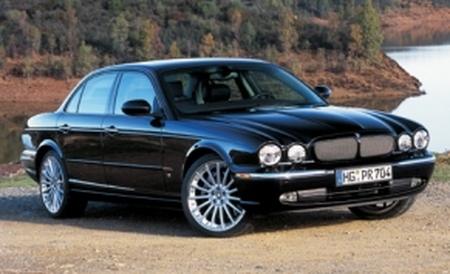Jaguar’s engineers are actually prouder of what they’ve done with the suspension of the XJ8, but to us it seemed soft to the point of feeling floaty at high speeds, and its lighter steering inspired less confidence hustling through bends. Air springs, they point out, were fitted not to give a better ride but for their ability to maintain an even keel while bearing a wide range of payloads. As a car’s curb weight is reduced, the weight of passengers and luggage becomes proportionally more significant.
Most of the aluminum suspension pieces of the new XJ are those found on the 2003 S-type. So is the excellent ZF six-speed automatic that Jaguar shares with Audi, BMW, and others. But arranging the automatic transmission’s manual override in Jaguar’s age-old J-gate shifter isn’t such a good idea. It’s too easy to move the lever a ratio too far, and as with the S-type R we tested last year (May 2002), it can’t be persuaded to give power-peak revs in every gear. In normal fast driving, the “S” automatic program (which cuts out sixth gear) is preferable.
We’ll have to wait for a road test to see whether this means (as it did with the S-type R) Jaguar’s performance figures can’t be attained. The claimed 0-to-60 time of five seconds for the new XJR would make it the fastest current production Jaguar. The regular 4.2, at 6.3 seconds to 60 mph, is 0.6 second quicker than its 4.0-liter predecessor, according to Jaguar.
The XJ’s aluminum structure is lighter and also stiffer than the less-expensive steel S-type’s. The only telltale signs of the aluminum construction are doors that are too light to close with a solid thunk and the thicker windshield pillars that can impede the driver’s view at oblique intersections.
Otherwise, making a lighter, bigger Jaguar has brought only advantages. With newfound space that the old model lacked and a better driving experience, the U.S. buyer benefits from a new deal inspired by environmental pressures. A roughly 10-percent fuel-economy improvement on the old XJ8 may not be so critical in the States, but the lightweight structure has made it possible to reintroduce a 3.0-liter V-6 XJ in Europe that still gives performance appropriate for a Jaguar but with significantly lower running costs.
View Photos
View Photos


Leave a Reply